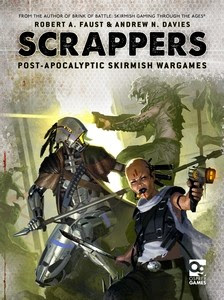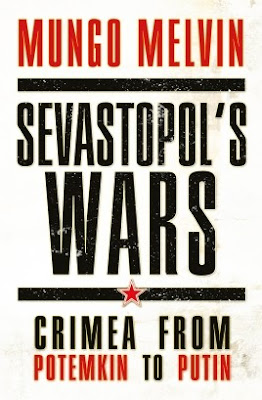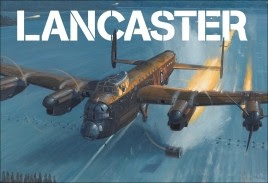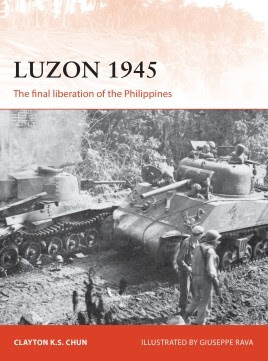Available this month from Osprey Publishing Ltd
Scrappers
More than 150 years have passed since the apocalypse that nearly destroyed the Earth. Today, the planet is a torn remnant of its former glory, ravaged by nuclear fallout and mutagens. New lifeforms - Mutants and Synthetics - challenge True Humanity for dominance, while warring factions compete for survival and supremacy, and all must carve out their place in this brutal landscape, or else perish as billions before them. Scrappers is skirmish miniatures game set in the wastelands, where players assemble Scrapper Crews and send them out to scavenge scraps of Ancient technology and battle rival factions. Explorers, cultists and raiders clash with mutated creatures, robotic soldiers and embittered True Humans in this wargame of salvage and survival in the ruins of the future.
Sevastopol’s Wars
Founded by Catherine the Great, the maritime city of Sevastopol has been fought over for centuries. Crucial battles of the Crimean War were fought on the hills surrounding the city, and the memory of this stalwart defence inspired those who fruitlessly battled the Germans during World War II. Twice the city has faced complete obliteration yet twice it has risen, phoenix-like, from the ashes.
In this groundbreaking volume, award-winning author Mungo Melvin explores how Sevastopol became the crucible of conflict over three major engagements - the Crimean War, the Russian Civil War and World War II - witnessing the death and destruction of countless armies yet creating the indomitable 'spirit of Sevastopol'. By weaving together first-hand interviews, detailed operational reports and battle analysis, Melvin creates a rich tapestry of history.
Contents
List of Maps
List of Illustrations
List of Tables
Author's Note
Prologue
PART ONE - EARLY SEVASTOPOL
Chapter 1 Crucible of Conflict
Chapter 2 The Founding of Sevastopol
Chapter 3 Bastion of Maritime Power
PART TWO - THE CRIMEAN WAR
Chapter 4 The Eastern War
Chapter 5 The First Defence of Sevastopol
Chapter 6 Inkerman and the Spirit of Sevastopol
Chapter 7 Defeat and Defiance
PART THREE - CITY OF REVOLUTION
Chapter 8 Ruin, Peace and Recovery
Chapter 9 The 1905 Revolution
Chapter 10 World War to Civil War
Chapter 11 Allied Intervention and the Russian Civil War
PART FOUR - MODERN WAR
Chapter 12 Red Terror to Patriotic War
Chapter 13 City of Courage: the Second Defence of Sevastopol
Chapter 14 The End of the Second Defence and Axis Occupation
Chapter 15 Liberation and Reconstruction
Chapter 16 Fraternal Conflict
Epilogue
Chronology
Endnotes
Bibliography
Acknowledgements
Lancaster
Developed from the underperforming twin-engined Manchester, the Avro Lancaster was the RAF's most successful heavy bomber of World War II, forming the backbone of Bomber Command during the large-scale night bombing campaign against occupied Europe. While Britain was unable to hit back on the ground, the Lancaster enabled Britain to take the fight to Germany. Its success meant that it was produced in massive numbers with more than 7,300 built up to VE-Day.
This complete illustrated guide to one of Britain's most iconic aircraft explores its history, strengths, weaknesses and combat performance in the war that would make it legendary. Drawing on a wealth of research, stunning illustrations and contemporary photographs, this book reveals how the Lancaster became a symbol of British resistance, before going on the offensive against Germany in bombing attacks such as the famous Dambusters raid.
Contents
Introduction
Chronology
Design and Development
Technical Specifications
Combat Use
Appendices
Index
The Long Range Desert Group in World War II
Established in June 1940, as the brainchild of scientist and soldier Major Ralph Bagnold, a contemporary of Lawrence of Arabia, the Long Range Desert Group (LRDG) allowed the British Army to gain a crucial advantage in the North African Front of World War II.
Traversing great swathes of the desert that had never before been explored by Europeans, the LRDG was able to launch hit-and-run raids against remote enemy targets such as the fort and airfield at Murzuk. From December 1941 until the end of the Desert War in May 1943, the LRDG carried out numerous missions in tandem with the Special Air Service, using their unparalleled knowledge of the desert to navigate the SAS to enemy airfields on which attacks would be launched. As well as in Africa, the LRDG also fought in the Aegean, undertaking numerous dangerous missions in Yugoslavia, Albania, Italy and Greece, displaying their extraordinary versatility by operating in boats, on foot and by parachute.
Using never-before-published photographs and archival material, interviews with surviving veterans who have never before gone on record regarding their wartime exploits, and special access to the SAS archives, Gavin Mortimer tells the story of the origins and dramatic operations of Britain's first ever special forces unit.
World War II German Motorized Infantry & Panzergrenadiers
In World War II Germany's doctrine of mobile warfare dominated the battlefield. By trial and error, the Germans were the first to correctly combine the strength in tanks and in mobile infantry and artillery. This integration of mobile units, equipment and tactics underpinned Germany's successes in the first half of the war. As the war dragged on, the Allies sought to copy German tactics but German armies remained supreme in this type of warfare until their losses had seriously degraded their capabilities.
This study traces the development of the different types of unit that came together in the Panzergrenadier branch from the inter-war years through World War II. Using colour plates to display the changes in uniform, equipment and insignia in all theatres of operations throughout the conflict, this is a complete account of Hitler's elite armoured infantry.
Luzon 1945
Driven from the Philippines in 1942, General Douglas MacArthur returned three years later to force the Japanese off of its main island of Luzon. Containing the capital of Manila, vital natural resources as well as thousands of Allied prisoners of war, the triumph at Luzon would be a vital step on the road to victory as the Americans continued to island-hop their way towards the Japanese home islands. This new study details one of the hardest-fought campaigns of the Pacific War with Japanese fatalities alone on Luzon topping 200,000. Emphasizing the differences in Japanese and American strategy, and detailing the combat operations of the campaign, this volume tells the story of how MacArthur kept his promise to return and liberate the Philippines.
British Destroyers 1939–45
The Royal Navy entered World War II with a large but eclectic fleet of destroyers. Some of these were veterans of World War I, fit only for escort duties. Most though, had been built during the inter-war period, and were regarded as both reliable and versatile. Danger though lurked across the seas as new destroyers being built in Germany, Italy and Japan were larger and better armoured. So, until the new, larger Tribal-class destroyers could enter service, these vessels would have to hold the line. Used mainly to hunt submarines, protect convoys from aerial attack, and take out other destroyers, these ships served across the globe during the war. This fully illustrated study is the first in a two-part series on the real workhorses of the wartime Royal Navy, focusing on how these ageing ships took on the formidable navies of the Axis powers.
For the men who served in America's Amphibious Forces during World War II, the conflict was an unceasing series of D-Days. They were responsible for putting men ashore in more than 200 landings throughout the conflict, most against well-entrenched enemy positions. Bloodstained Sands: US Amphibious Operations in World War II tells the story of these forgotten men for the first time, tracing their operational history from Guadalcanal to Casablanca, Sicily, Normandy, Iwo Jima and finally Okinawa. The men's stories are told in their own voices, with fascinating accounts from Underwater Demolition Teams, Attack Transport crews and many other unsung heroes of World War II.
First-hand interviews, entries from personal diaries and Action Reports create a unique history, perfectly complemented by historic illustrations and detailed maps. These are timeless tales of determination, sacrifice, and triumph of the human spirit - tales of US Amphibious Forces that for too long have gone forgotten and untold.
Contents
Acknowledgements
Maps
Author's Note
Briefing
1. Sowing the Wind
2. First Strike
3. Lighting the Torch
4. Up the Slot
5. Isolating Rabaul
6. Hell on Ice
7. The Soft Underbelly
8. Breaching the Barrier
9. To the Far Shore
10. Reaping the Whirlwind
Epilogue
Abbreviations
Bibliography
Notes
Index
With an incredible World War II combat record that includes parachuting into Normandy on D-Day, service during Operation Market-Garden, at Bastogne and in Germany itself, Ed Shames was involved in some of the most important battles of the war. A member of the legendary 'Band of Brothers', Shames' own words and recollections fuel a searing account that gives a soldier's glimpse into the ferocity of the fighting on the ground and the close fellowship that developed between the men in Easy Company. The first member of the 101st to enter Dachau concentration camp just days after its liberation, Shames ended the war in the bombed out shell of Hitler's Eagles Nest, surrounded by his comrades in arms.
In this paperback edition by the author of Tonight We Die As Men, this is the phenomenal story of a remarkable young lieutenant during World War II, following him from the gruelling training at Toccoa right through to the eventual collapse of the Third Reich.
Dutch Armies of the 80 Years’ War 1568–1648 (1)
The 80 Years' War (also known as the Dutch War of Independence) was the foundation of Dutch nationhood, and during the course of the conflict one of its main leaders - Maurice of Orange-Nassau - created an army and a tactical system that became a model throughout Europe.
This study, the first of a two-part series, focuses on the Dutch infantry. It examines how Maurice of Orange-Nassau attracted volunteers and students from across Europe, introduced innovative new training methods such as common drill movements, and standardised the organisation and payment system of the army to make it more than a match for the occupying Spanish. His successes inspired officers and generals across the continent to copy his methods, including many English officers who went on to fight in the English Civil Wars. Featuring full-colour artwork and rare period illustrations, this book examines how the Dutch infantry was transformed into a fighting force able to defeat the might of Imperial Spain.










No comments:
Post a Comment